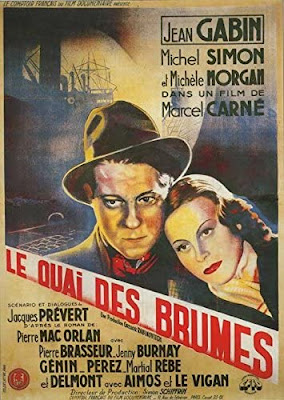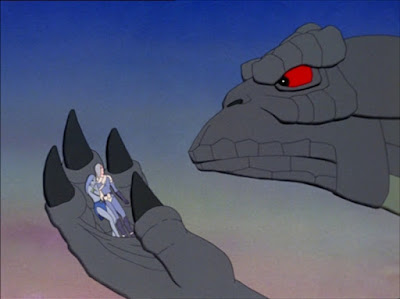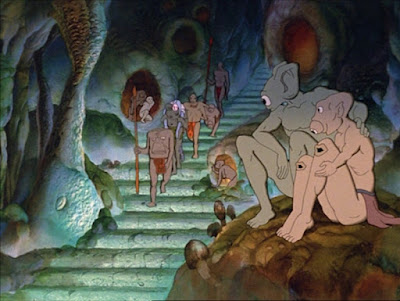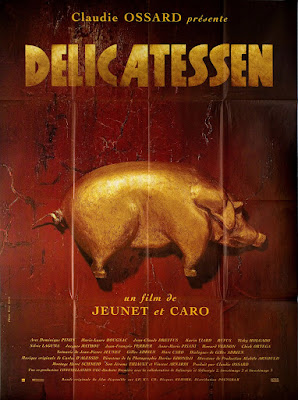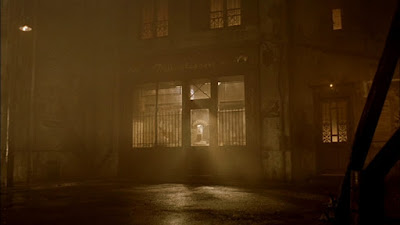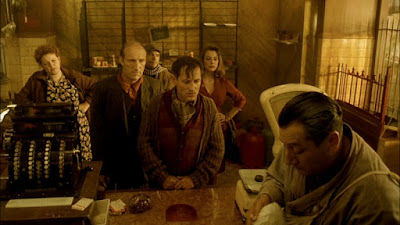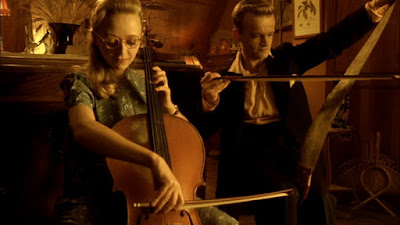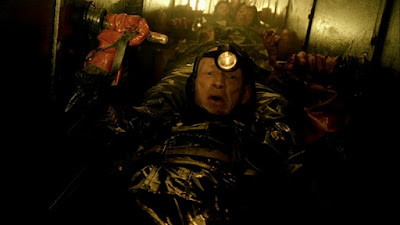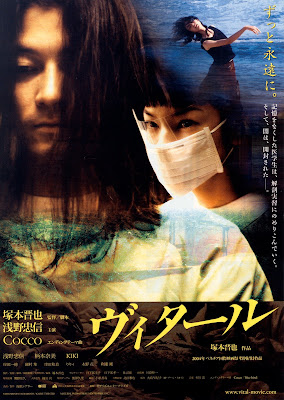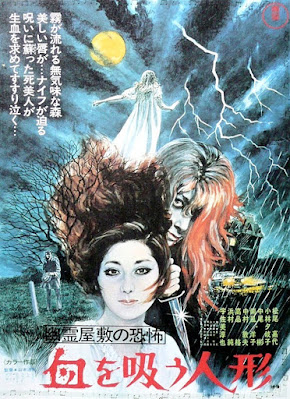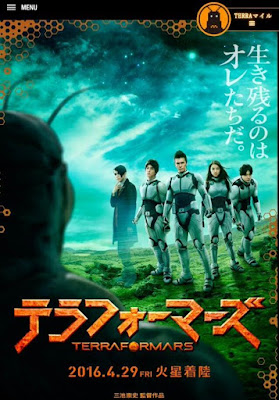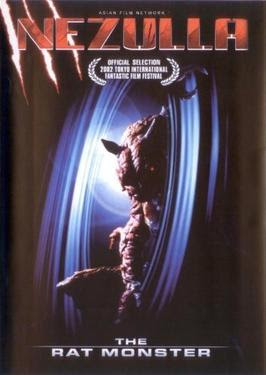Port of Shadows (1938) Jean (Jean Gabin), an AWOL soldier, hitches a ride to the port town of Le Havre, with the intention of assuming a new identity and hopping on a cargo ship bound for Venezuela. In a short span of time, he meets new friends (including a dog who stays glued to his side) and a few enemies. Things become complicated when he encounters Nelly (Michèle Morgan), a young woman with a checkered past, and it’s love at first sight. Marcel Carné’s sublimely bittersweet film (based on a novel by Pierre Dumarchais) explores the ephemeral nature of joy, contrasted with the crushing pitfalls of life. Jean Gabin is superb in his compassionate portrayal of a tough guy with a soft spot for the downtrodden. Port of Shadows is an unforgettable film that’s alternately heartbreaking and life-affirming.
Rating: ****½.
Available on Blu-ray, DVD, Amazon Prime and Kanopy
Orpheus (aka: Orphée) (1950) Jean Cocteau’s modern interpretation of the Greek Orpheus myth stars Jean Marais as the title character, a beloved local celebrity (In this version, he’s a poet instead of a musician). He becomes so engrossed in his work that he scarcely notices his pregnant wife Eurydice (Marie Déa). When she suddenly dies, the remorseful protagonist must bargain with Death (María Casares, in a winning performance) and the underworld, to bring her back to the realm of the living. Unfortunately for Orpheus, the trade-off is that he can never look upon her face again. Cocteau’s film is endlessly innovative, working with what must have been a miniscule budget. It’s a novel spin on a classic tale, told with humor and aplomb.
Rating: ****.
Available on Blu-ray and DVD
Rating: ***½.
Available on Blu-ray, DVD and Kanopy
The Extraordinary Adventures of Adèle Blanc-Sec (2010) Writer/director Luc Besson’s fanciful fantasy/adventure film, set in 1911 and based on a series of comics by Jacques Tardi, is a briskly paced romp. Louise Bourgoin stars as the free-spirited title character, a novelist/adventurer-extraordinaire, seeking a cure for her twin sister’s ailment (also played by Bourgoin). Her perilous quest takes her from the pyramids of Cairo to the streets of Paris, dodging all manner of cutthroats and authorities along the way. Besson, who described Blanc-Sec as “basically the grandmother of Indiana Jones,” follows in the footsteps of Spielberg’s films, with a movie that’s assuredly light on substance, but loads of fun (Who doesn’t want to see mummies walking around Paris or a pterodactyl soaring over the city?). It’s too bad that (as of today), there’s no sequel planned, since it would have been the basis for a good series.
Rating: ***½. Available on Blu-ray, DVD and Tubi
The Swindle (aka: Rien Ne Va Plus) (1997) Isabelle Huppert and Michel Serrault star as Betty and Victor, a pair of small-time grifters. They make a living preying on unsuspecting rubes, moving from town to town in a motorhome and shifting identities. They find themselves over their heads when they acquire a briefcase with 5 million Swiss francs (roughly $5.6 million USD) from a naïve businessman (François Cluzet). Huppert and Serrault have good chemistry together, but considering the subject matter, writer/director Claude Chabrol’s film seems insubstantial. Except for one particularly nasty scene, The Swindle lacks bite, and the plot doesn’t have nearly enough twists and turns. Also, considering the events that precede it, the ending is a bit forced. It’s diverting enough, but it could have been so much better.
Rating: ***.
Available on DVD and Kanopy
The Shiver of the Vampires (aka: Le Frisson Des Vampires) (1971) Okay, I would probably be the first person to admit that I don’t “get” the appeal of Jean Rollin’s films, outside of the fact that he knows how to present appealing visuals. Newlywed couple Isa and Antoine (Sandra Julien and Jean-Marie Durand) plan to honeymoon at a castle owned by Isa’s cousins. Their enthusiasm is dampened, however, when villagers inform Isa that her cousins recently died. As we soon discover, they’re not quite as dead as we were led to believe. Jean Rollin’s moody, erotic vampire film is well shot, with a flair for artsy angles and a nice use of color. As a horror film, it lacks any moments of dread or suspense, the story meanders, and the characters are generally unlikeable (the cousins are obnoxious twits). On the other hand, if all you care about is watching pretty women alternating between diaphanous, pastel-colored nightgowns and varying stages of undress, then be my guest.
Rating: **½.
Available on Blu-ray, DVD and Kanopy

